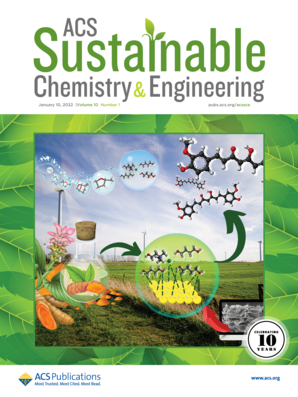Ir–Co3S4/CoOxHy Heterojunction Enables Efficient Alkaline Oxygen Evolution through Binuclear Ir–Co Active Sites
IF 7.1
1区 化学
Q1 CHEMISTRY, MULTIDISCIPLINARY
引用次数: 0
Abstract
Developing efficient and stable oxygen evolution reaction (OER) electrocatalysts is vital to advancing the expansion of water-splitting for green hydrogen production. However, the high overpotential and unsatisfactory stability of electrocatalysts have been significant obstacles. Herein, hydrothermal and cathodic electrodeposition are utilized to prepare an atomically dispersed Ir-doped Co3S4 electrocatalyst (Ir–Co3S4) as precatalysts, exhibiting a record-low overpotential (158 mV at 10 mA cm–2) and ultrahigh stability (1000 h at 100 mA cm–2) in 1 M KOH after activation, making it one of the best-performing OER anodes. In situ characterizations and theoretical calculations demonstrated that Ir–Co3S4 undergoes a precatalytic evolution of sulfur–oxygen exchange to form a dual-anionic coordination environment, which is conducive to enhancing the activity of CoOOH formation at operating voltages. Ir–Co dual active sites in Ir–Co3S4/CoOxHy could trigger the OER via a kinetically advantageous oxide coupling mechanism (OCM). Furthermore, in conjunction with the Raman findings, the molecular dynamics simulations demonstrate that the SO42– generated by the electrode exerts a role in repelling Cl– through dense coverage and electrostatic repulsion, demonstrating the potential being used in saline-alkaline water splitting. This work proposes combining single noble metal atoms with economically efficient metal sulfide catalysts and presents a rational design approach for hydrogen production electrocatalysts.

Ir-Co3S4 /CoOxHy异质结通过双核Ir-Co活性位点实现高效的碱氧演化
开发高效、稳定的析氧反应(OER)电催化剂对于推进绿色制氢水裂解技术的发展至关重要。然而,高过电位和不理想的稳定性是电催化剂发展的重要障碍。本文采用水热法和阴极电沉积法制备了原子分散的ir掺杂Co3S4电催化剂(Ir-Co3S4)作为预催化剂,激活后在1 M KOH中表现出创纪录的低过电位(10 mA cm-2时为158 mV)和超高的稳定性(100 mA cm-2时为1000 h),是性能最好的OER阳极之一。原位表征和理论计算表明,Ir-Co3S4在工作电压下经历了硫氧交换的预催化演化,形成了双阴离子配位环境,有利于提高CoOOH的形成活性。Ir-Co3S4 /CoOxHy中的Ir-Co双活性位点可以通过一种动力学上有利的氧化偶联机制(OCM)触发OER。此外,结合拉曼研究结果,分子动力学模拟表明,电极产生的SO42 -通过密集覆盖和静电排斥发挥排斥Cl -的作用,表明其在盐碱水分解中的潜力。本工作提出了将单一贵金属原子与经济高效的金属硫化物催化剂结合,提出了一种合理的制氢电催化剂设计方法。
本文章由计算机程序翻译,如有差异,请以英文原文为准。
求助全文
约1分钟内获得全文
求助全文
来源期刊

ACS Sustainable Chemistry & Engineering
CHEMISTRY, MULTIDISCIPLINARY-ENGINEERING, CHEMICAL
CiteScore
13.80
自引率
4.80%
发文量
1470
审稿时长
1.7 months
期刊介绍:
ACS Sustainable Chemistry & Engineering is a prestigious weekly peer-reviewed scientific journal published by the American Chemical Society. Dedicated to advancing the principles of green chemistry and green engineering, it covers a wide array of research topics including green chemistry, green engineering, biomass, alternative energy, and life cycle assessment.
The journal welcomes submissions in various formats, including Letters, Articles, Features, and Perspectives (Reviews), that address the challenges of sustainability in the chemical enterprise and contribute to the advancement of sustainable practices. Join us in shaping the future of sustainable chemistry and engineering.
 求助内容:
求助内容: 应助结果提醒方式:
应助结果提醒方式:


